Empirical Exercise 15: Counterinsurgency
1/20
There's no tags or description
Looks like no tags are added yet.
Name | Mastery | Learn | Test | Matching | Spaced |
|---|
No study sessions yet.
21 Terms
question, hypothesis, answer
Question: Does aid in reconstruction projects reduce insurgent attacks against coalition forces in post-conflict nations like Iraq?
Hypothesis: Providing reconstruction aid (such as through CERP programs) reduces the frequency of insurgent attacks.
Theory: "hearts and minds" strategy
Governments can reduce support for insurgents by providing public goods and services (e.g., electricity, water, and security).
This increased local satisfaction and loyalty leads to a decline in insurgent violence.
The approach contrasts with traditional military methods eg chasing rebels and suggests that development aid can serve as a non-violent tool in conflict reduction.
history of iraqi war
-2003, US invaded Iraq
-iraqi military forces defeated in 3 weeks
-from 2004, increasing attacks from insurgents against US forces
-2007: surge [mass increase in US military force] and then violence begins to decline
-iraq has 18 governorates sub divided into 104 districts
-iraq ethnically divided into 3 groups: kurds, sunni, shi’a
-sunni are generally less welcoming to US forces
-violence concentrated in sunni/mixed areas [with sunni and shi’a], not high in shia and kurdish areas
data, variables, observations
Panel dataset assembled by Iraqi Statistical Office COSIT, World Food Programme WFP
Focus on small projects, as they are more effective in reducing violence
CERP: commander’s emergency response program
Unit of observation is district/semester: 10 semesters from Jan 2004-Dec 2008 in dataset
individual unit is a district and time unit is a half-year
year dummy: as there are 2 half-year semesters in 2006 [half =1 if 1st semester and half=2 if 2nd]
Main dependent variable is violence: no. of attacks per capita against coalition and iraqi gov forces from 2004-2008
Provided by ESOC project: including location/time/date of attack
Main independent variable is spending on reconstruction projects from 2003-2008
Provided by US Army IRMS
Reconstruction spending total was 3.1b dollars from 3 programs: CERP, CHRRR, OHDACA
-time invariant characteristic of a district: votes in democratic party elections for 3 ethnicities
-balanced panel: very district sampled in every semester
-10 semesters in dataset so 1040 observations
empirical model
-v is number of attacks
-effect of CERP on violence/ no of attacks
-top regression will cause positive bias

18 governorates, 104 districts
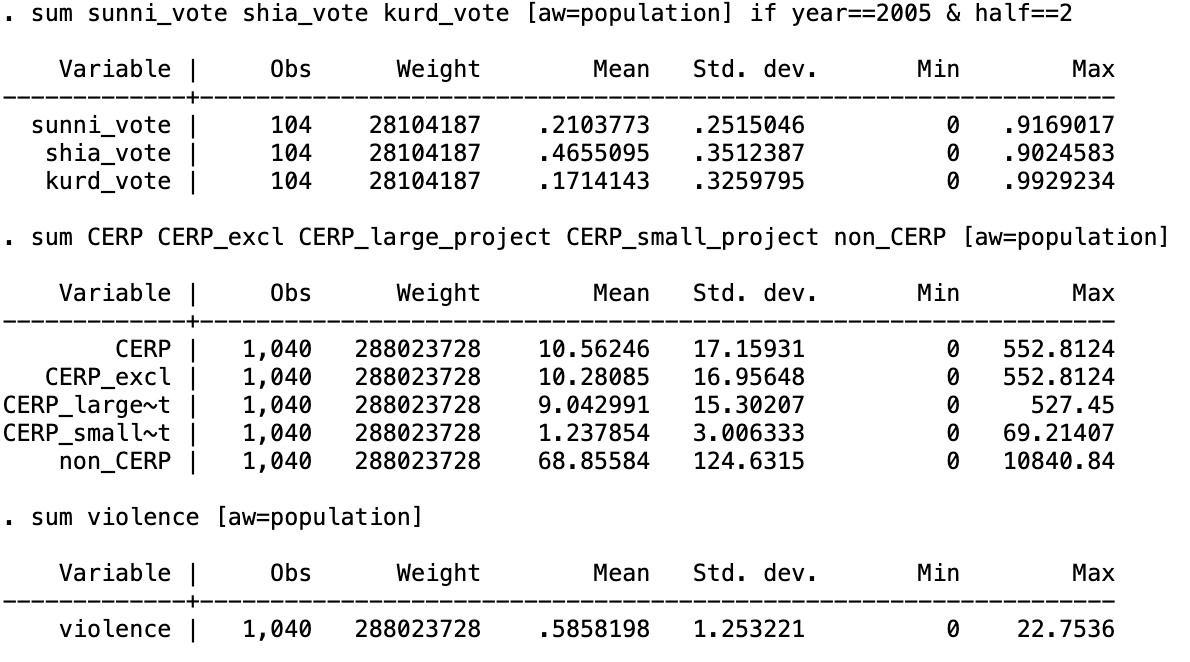
-21% of Iraqis voting for clearly sunni parties
-47% voting for shia parties
-17% voting for kurdish parties
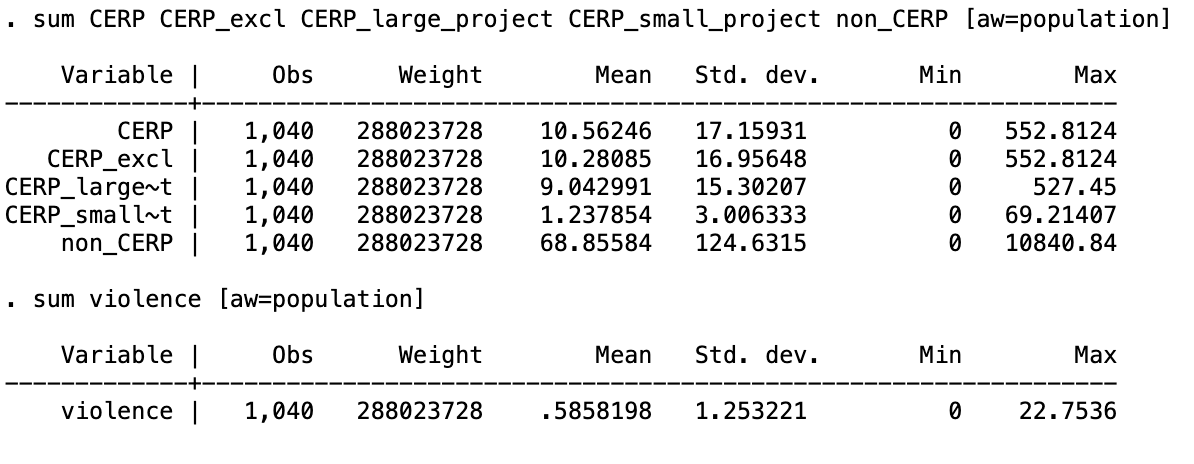
CERP spending averaged per resident per semester to 10.56 dollars

attack against coalition/iraqi forces averaging 0.59 per 1000 residents epr district per semester
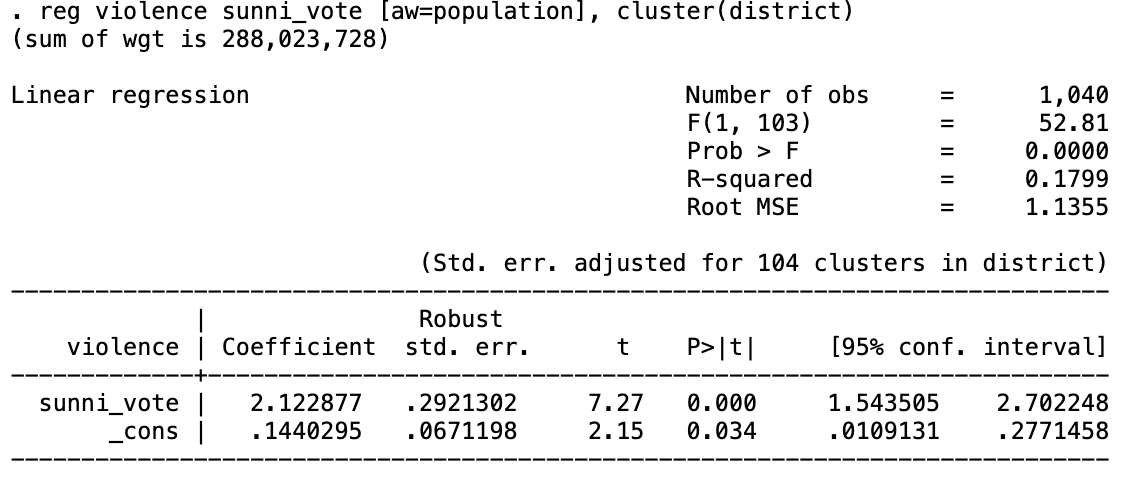
district that voted entirely sunni predicted to have 2.1 more incidents per 1000 than district with no sunni votes
-district with no sunni votes only predicted to have 0.14 incidents
-15x more incidents in sunni areas

-relative to yr1: 2004 is omitted
-violences increase by 0.19 incidents per 1000 ppl in 2005 vs 2004
-0.53 and 0.61 incidents per 1000 in 2006 and 2007
-dropped in 2008: yr5
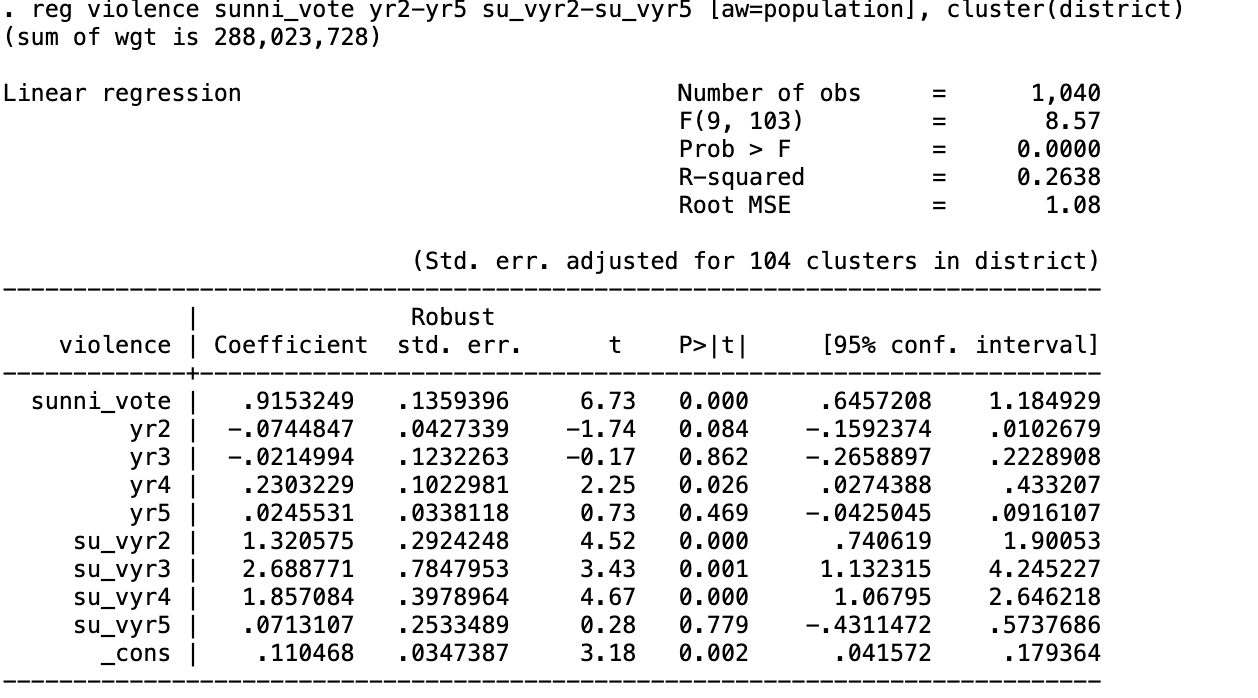
-To see if there are different effects of Sunny share in different years include interaction terms between the two
-diff effect of sunni vote share in diff years
-when interactions controlled for no stat signif pattern of increasing violence across time
-most of escalation in violence related to districts with high sunni vote share
fixed estimator model to get rid of OVB
-OVB is caused by sunni population, whether a district has a lot of sunni or lot is important and a strong reason for OVB
presence of sunni is correlated with amount of violence because they were unhappy/less welcoming to US forces, violence concentrated in Sunni areas vs shi’a if you don't control for sunni population it will be in error term if you don’t control for it
Presence of sunni correlated with spending in an area, spending allocated to place where there are more attacks/violence which is in Sunni areas
-control for district/ individual fixed effect: controlling for how much Sunni’s there are: underlying propensity for violence
-fixed effects estimator model
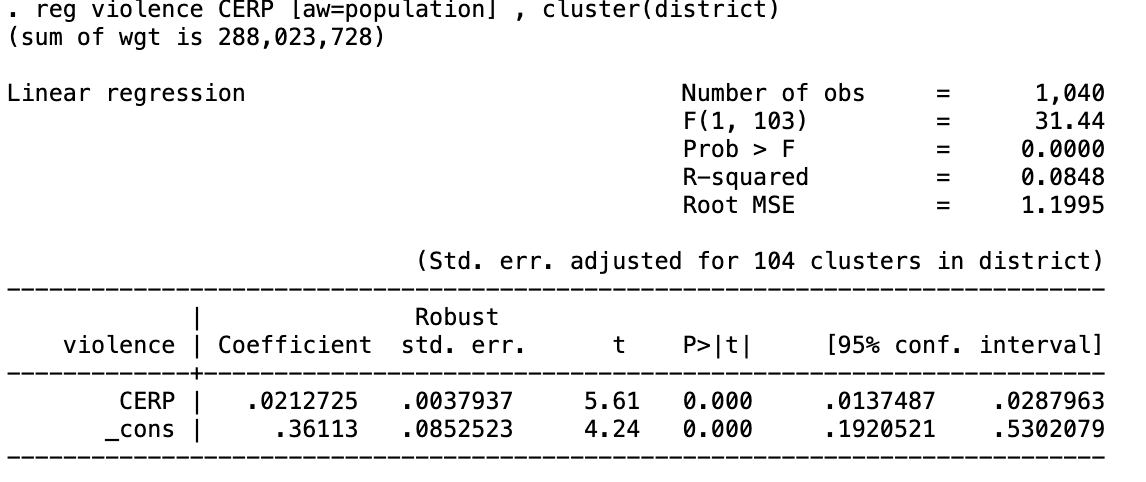
-districts with higher predicted violence receive higher CERP spending: could be due to reverse causality
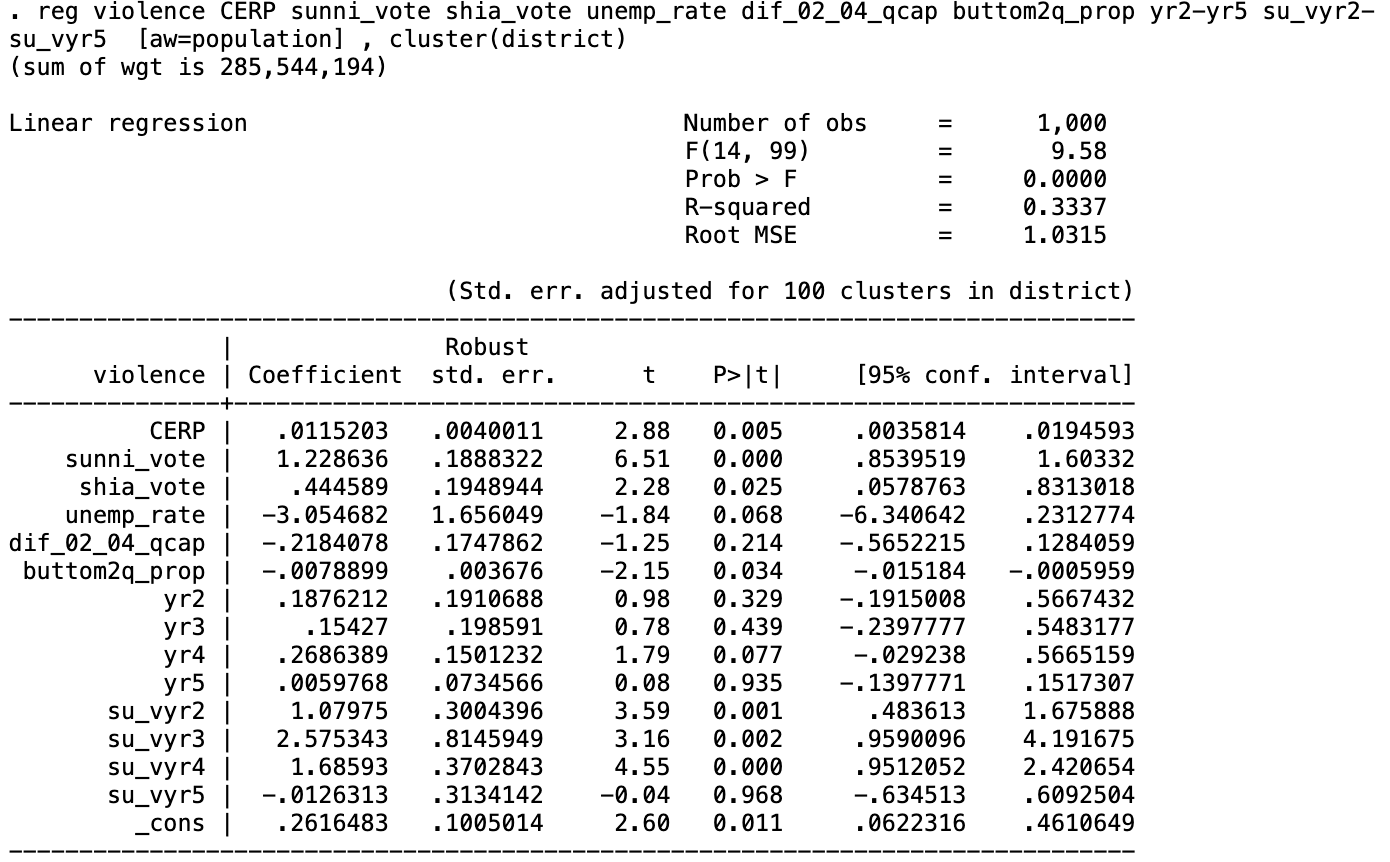
-controlling for additional controls
-estimated coefficient lower but still significant: reverse causality not fully addressed with simple controls
-controlling for eg ethnic composition not enough to overcome bias
first difference model
-can take first differences: another way of getting rid of time invariant element in the error term that is potentially causing a bias eg in this case underlying propensity to violence of a district
-fixed effect disappears
-running regression on change in violence from one period to another vs amount of violence
Change in control variables is change in Zit
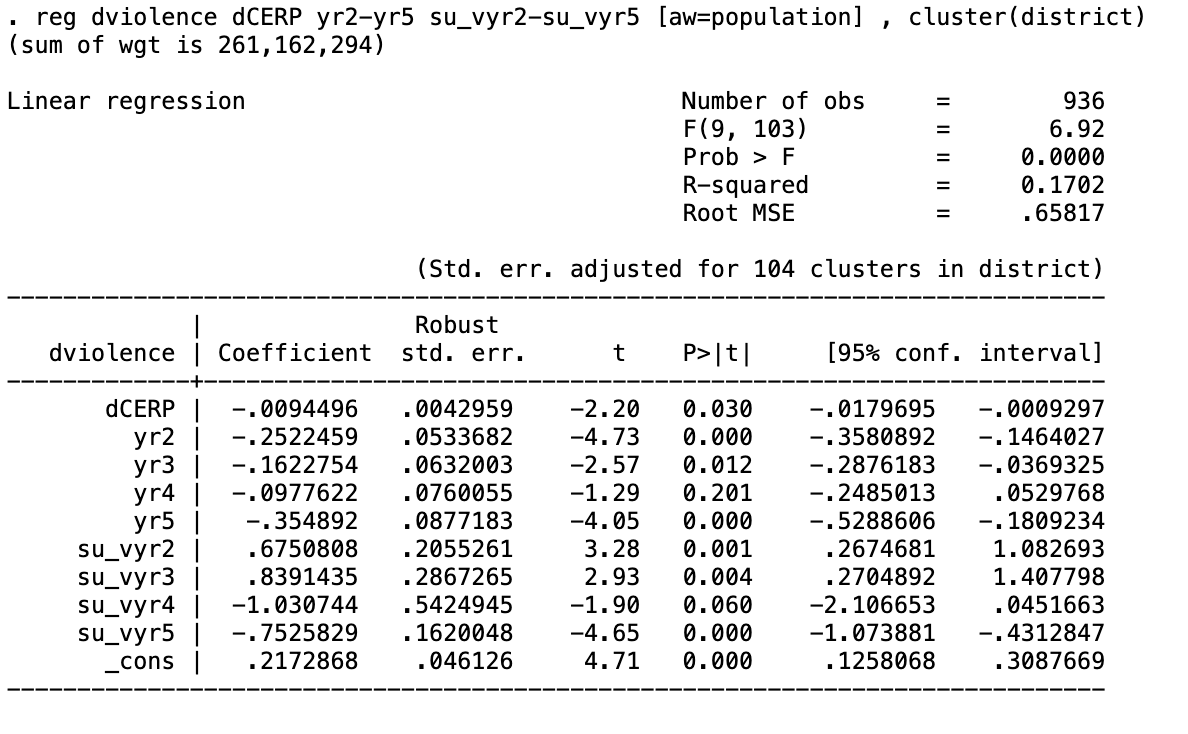
-observations decrease from 1040 to 936 as first semester has disappeared
-shows our previous OLS was affected by positive bias bc of reverse causality
-conditional on district characteristics, gov spending on CERP has decreased violence
-in first diff model: coefficient becomes negative
-dependent variable: change in violence
CERP effectiveness during the surge model and how to measure
-whether CERP increased ineffectiveness during the surge
-formally test the diff in coefficients across periods (pre and post), comparing specifications including the usual controls
-difference-in-difference estimation and estimate the following model
-θ is the coefficient of interest
-interaction term allows for the effects to differ across two periods
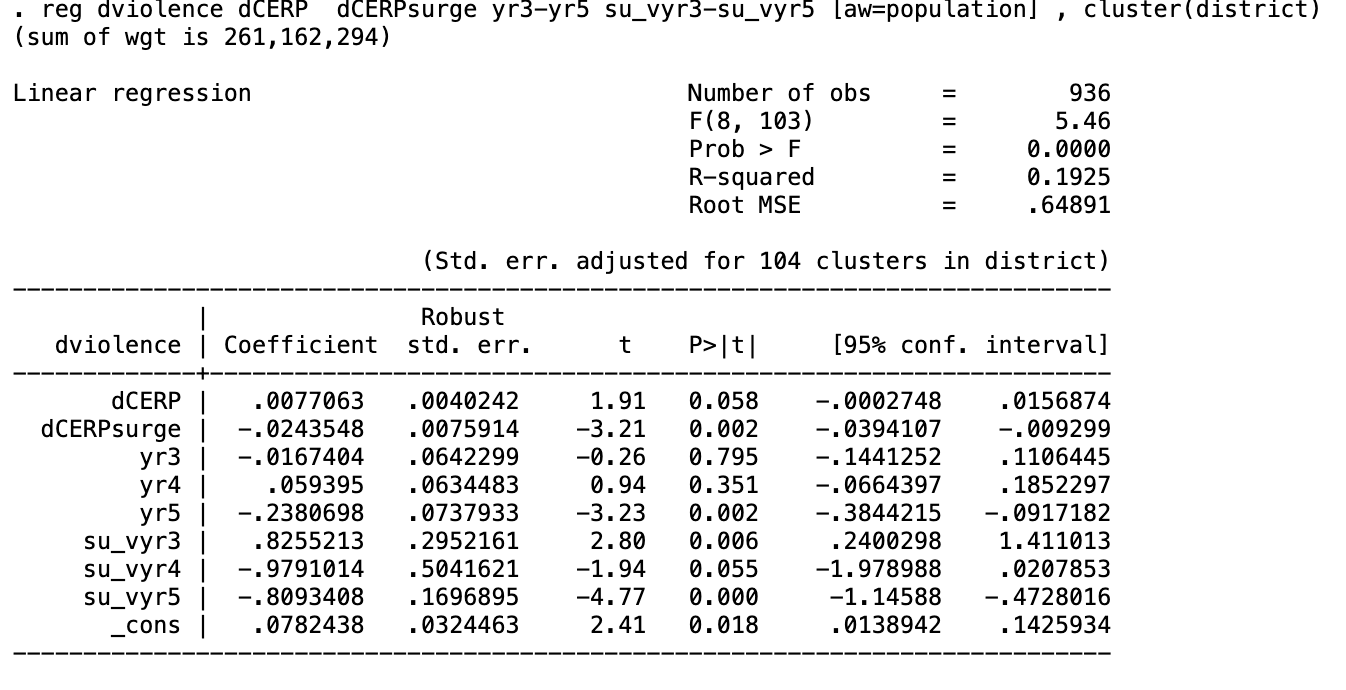
-outside of surge period dCERP coefficient is positive
-dCERP spending partially effective during surge -0.0243 and i is significant showing there was drop in violence in latter period
-sum of coefficient dCERP + dCERPsurge to show how spending changed during surge: 0.007 + (-0.024) = -0.017
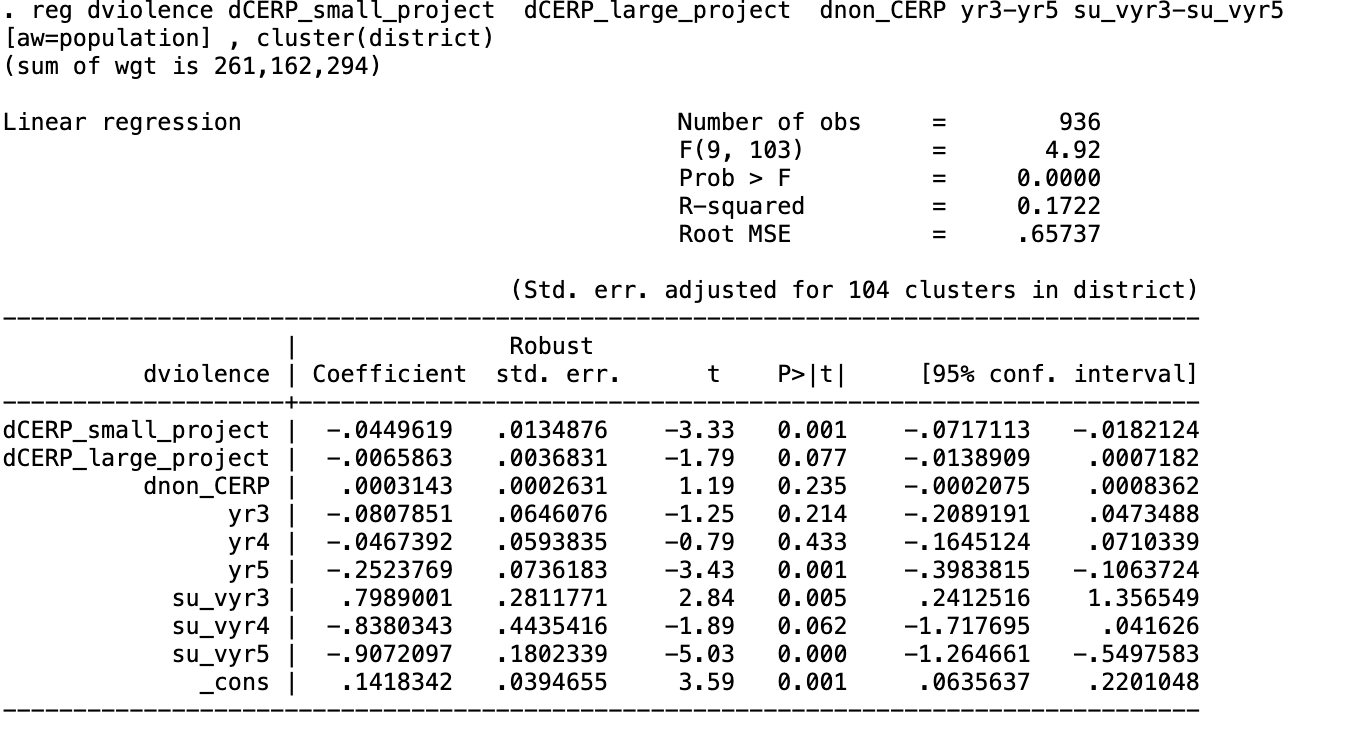
CERP spending on small projects was significant and magnitude was 7x larger
internal validity
-Reverse causality (more violent areas might get more aid), omitted variables.
-addressed by using first-differencing to eliminate district-specific effects and a difference-in-differences approach to examine changes pre- and post-surge
external validity
-applicable to other post conflict nations eg afghanistan, palestine
-cultural, political and military contexts may differ between countries which affects application of results